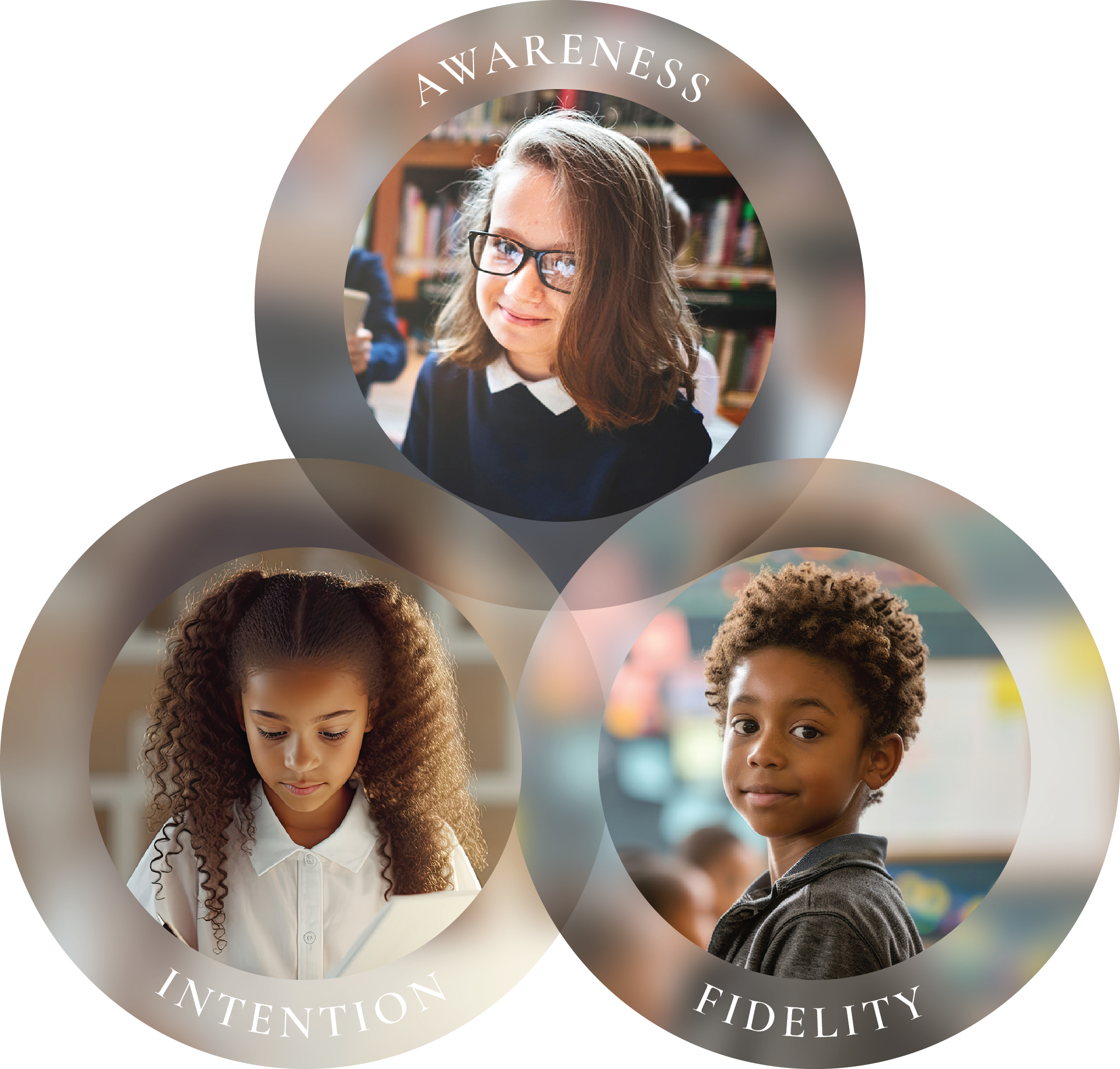Sensing and Responding
for Transformation
By Chuck Peters
The transformation of a ‘completely failing’ school in London, St. George’s Primary School in Battersea, is a wonderful story.
The transformation and continuation of St. George’s is a living example of Generative Education, which we define as:
“an integrated approach to creating learning environments that enable each child and teacher to develop agency, connection, and courage so that they can sense and respond in life-affirming ways throughout their life.”
We have unpacked that definition in our paper Generative Education, which provides more context and detail than this short introduction can provide.
When I met the leaders of St. George’s in 2015, their school had transformed over ten years from being at risk of closure to one of the best schools in the UK. The children, parents, and neighborhood had not changed. Those who did the work have told their stories directly in the three videos referenced below. What follows are my reflections on those stories and my visits to the school over the last eight years, along with current input and affirmation from Jan Hilary, the former Head Teacher, and Sarah Collymore, the current Head Teacher.
I asked the school leaders what theories they had applied to cause such a transformation. They just laughed. We did not have time for theories, they said. “It was utter chaos. Anyone who could be yelling was yelling. All we could do was sense and respond.”
Yet that sensing and responding was within a framework, which at its core values the dignity of each individual, recognizes that we each have an authentic voice and that the purpose of school is to enable us to express ourselves in the world authentically through our voice and our work. That purpose can be pursued delightfully, with joy in the moment.
That sensing and responding took years. And the next step only emerged once the first step had been taken. The first two years enabled the school to avoid the possibility of being shut down.
Because the school was so chaotic, the first step was to engage the school community in creating a ‘calm school code’, a code so simple it could easily be remembered by a 3-year-old just entering the school or a 63-year-old grandmother picking up her grandchild. Our paper Generative Education describes this code:
The language is simple and each person, while on the school property, is expected to:
Speak Nicely
Listen Carefully
Act Kindly
Move Calmly
This Calm School Code is literally carved in stone and displayed prominently in the school hall. It is equally applied to all members of the school community, not just the students. Breaches of the code are immediately highlighted, and the actor is given the opportunity to consider how they could enact the positive directive instead.
Note particularly the phrase “on the school property”. I was so impressed that the school leaders spoke directly to the children as they first entered the school at age 3 or 4. The leaders acknowledged that the child’s home or street may not be safe, and they have ways of acting at home or on the street that may be appropriate for those settings. But school is a safe environment because we have ‘precious learning time’ and we don’t want to disrupt that.
As the school was calming down, they noticed the need to develop oral language. Each child was paired with a ‘buddy’. All students were encouraged to honor ‘precious learning time’ and speak with their ‘confident voice’. To more easily enable that, often the teachers would give a prompt and then ask the children to talk with their buddy about the prompt. When they had finished talking and thinking about the prompt, they placed their thumb up on their chest to signal that they were finished and ready to share. The teacher can see the thumbs but the class is not disrupted with waving arms and shouting children.
Once their oral language is developing and they can perceive the sound structure of speech a systematic synthetic linguistic phonics curriculum helps them to use print. Writing is integrated from the start.
For the development of oral language, the teacher reads many stories. After weeks of story reading the teacher notes that they could also make up a story. Stories often begin with “once upon a time”. So, once upon a time there was a what? Talk to your buddy. With 13 pairs of buddies in the class there are many ideas – a cowboy, an astronaut, a princess, a rhinoceros. After some discussion with the class, the rhinoceros is chosen. What is the issue with the rhinoceros? He had a big itch. What happened next? Next? In this way, the class co-creates the story. The teacher then tells the story and creates pictures to enable the children to memorize the story with the picture cues. Then the class plays with the sound structure of speech, clapping on sentences, words, and syllables.
All of the tools and techniques used to develop oral language and translate it into print are within a joyful learning culture, an interdependent ecosystem that is resonant and consistent. As we noted in Generative Education: “This allows the children to maintain spaciousness, agency and connection, while learning the socially constructed tools to express their authentic voice in a confident manner.”

The staff focuses on the three core pillars of awareness, intention, and fidelity. Every teacher can articulate why every classroom detail is as it is, why adults are using particular vocabulary choices and grammatically accurate sentences, why every letter, word, or sentence on display is 100% accurate in handwriting, grammar, and content, why children are sitting where they are and with whom. Nothing is accidental, everything is intentional. Each lesson, creative and lively as it may be, ends with calm and order – like a tennis player returning to the center in readiness for the next ball. Then the teacher greets the children for the next session with a clean teaching board, books neatly placed at each child’s station, and a calm, affirming demeanor to set a positive culture for learning. There is an understanding – revisited each training day – about why fidelity to accuracy matters. We may refer to this as the Hippocratic oath of teaching because it commits to giving the correct model at all times – nothing is random and everything the adult does, if the child copies it, is right. They encapsulate this in the simple phrase ‘Watch me, now you have a go’.
Accountability is also central to their culture. The staff handbook, updated annually and signed by all staff, sets out what is expected. If you work at St George’s you have to be fully aligned with the shared values. The children in this context have a mountain to climb to achieve excellence and leadership expectations are sky-high to make the journey risk-free. The payback is a glorious working culture, all the resources needed to do what is required, and an unwavering promise that at St George’s you will become the best you can be.
The story of the initial transformation of the school is in the 25-minute video From Crisis to Calm.
Because some people saw that video as a reflection of the charisma of the initial leader, Jan Hilary, we made a second 25-minute video, two years after Jan had left the school, featuring the children, and showing that the school was continuing to move from strength to strength – Commitment and Consistency
In response to questions about the particular language development approach, we created a video featuring Pie Corbett, the language expert who strongly influenced the school – Pie Corbett – The Story of a Storyteller.
Because I told the story of St. George’s, I was invited to the House of Lords to discuss education. When pressed on the essential issue, and put on the spot, I noted that we are generally using ineffective methods within too limited a cosmology.
That statement resulted in an introduction to Jude Currivan, who is leading multiple efforts to embody a new cosmology reflecting ancient wisdom in a Unitive Narrative.
Someone who watched the St. George’s videos and read the Generative Education paper told me that I needed to meet the leaders of Springhouse, a learning environment in Virginia that focuses on vitality. I now am the chair of the board of Springhouse and encourage others to visit to see what is possible.
No blueprint can be adopted across all situations. However, I do believe that groups of people, in place and over time, can sense and respond to live into more life-affirming cultures.
